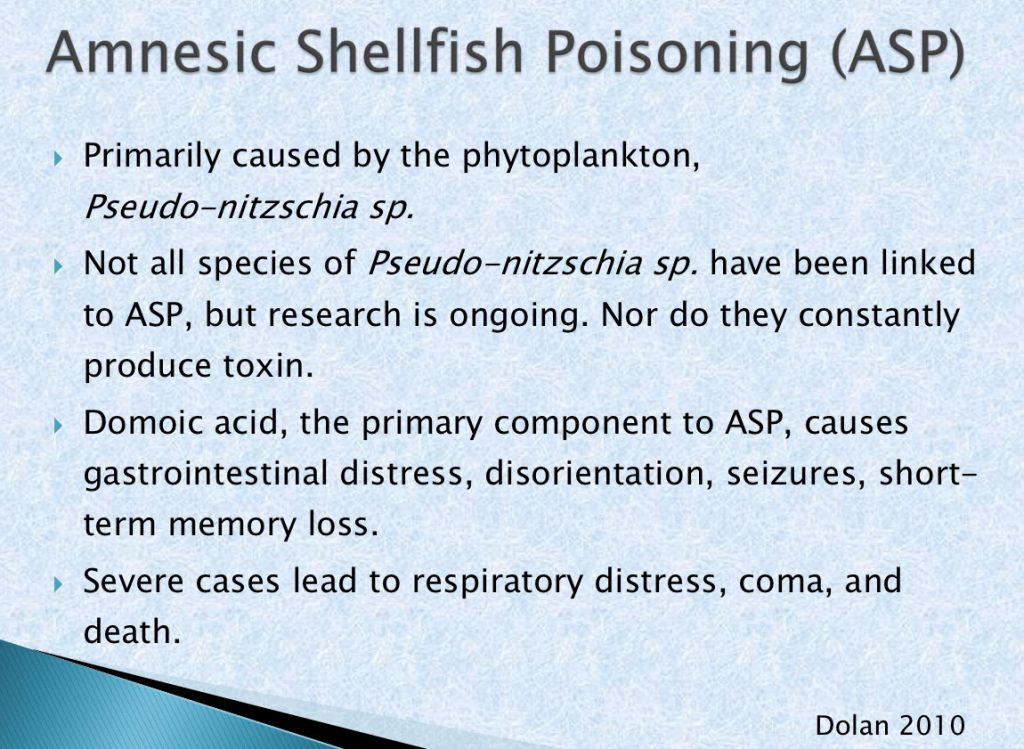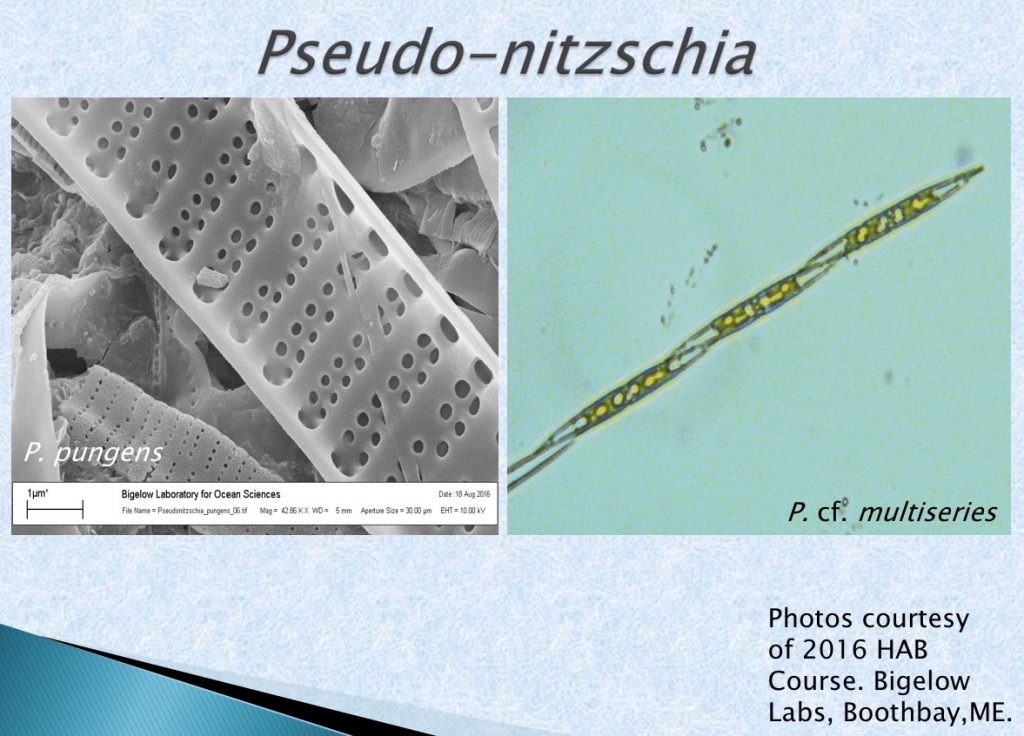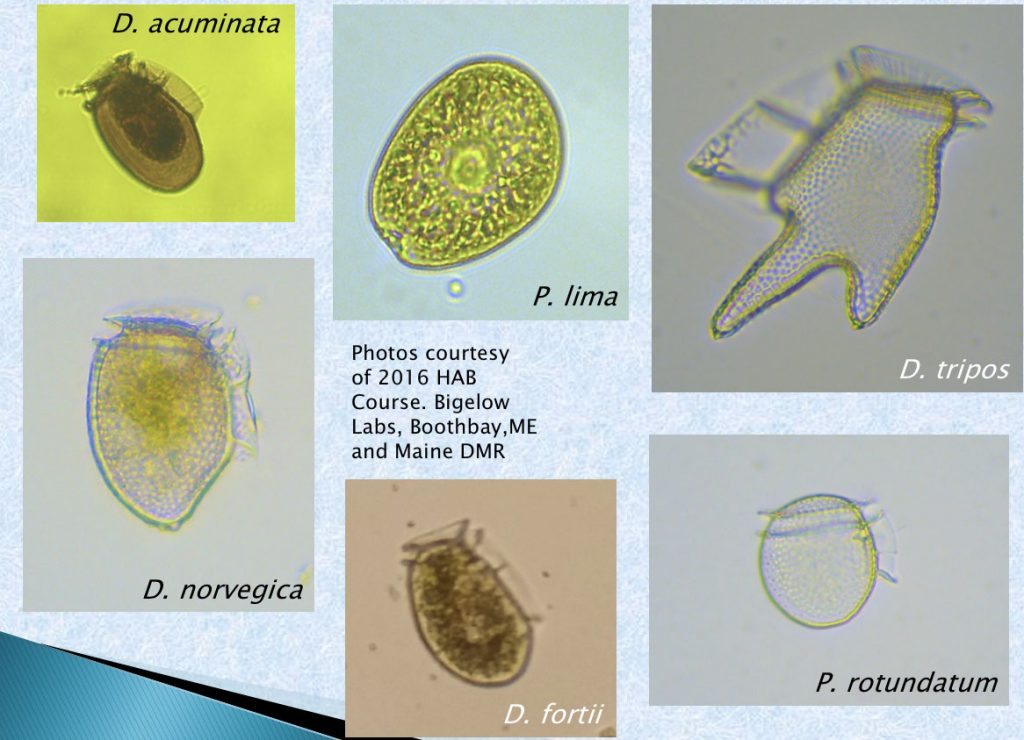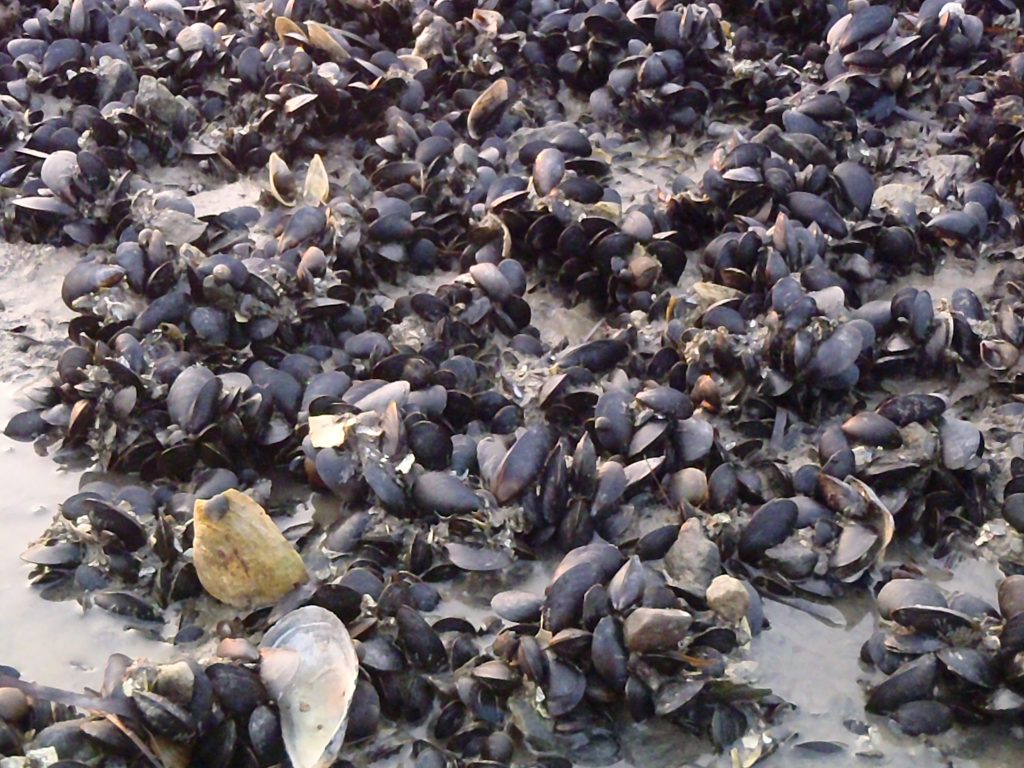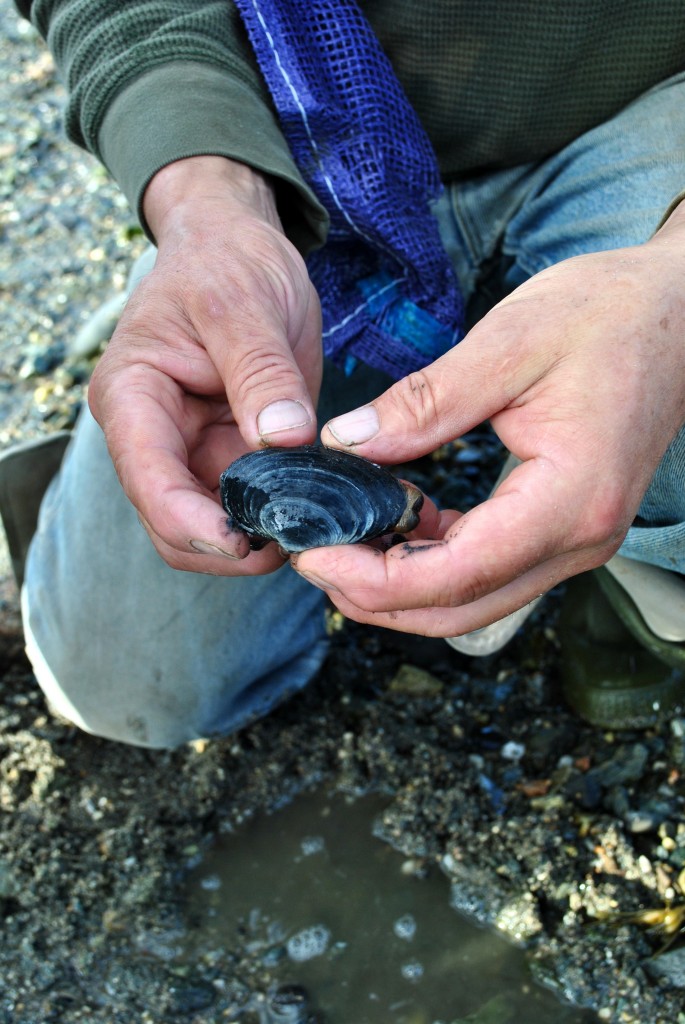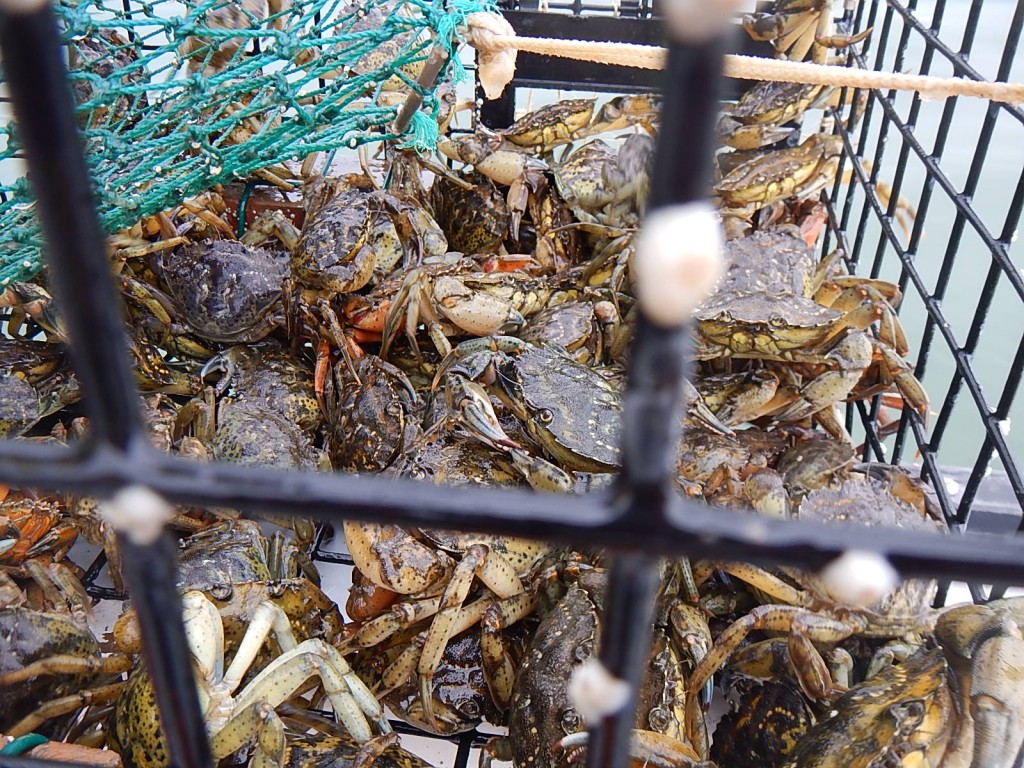Summary of a presentation at the September 7, 2019 meeting “Water Quality, Stewardship, and the health of Frenchman Bay” organized by Frenchman Bay Partners and held at Schoodic Institute.
Barry King, from the Maine Department of Marine Resources (DMR), presented on harmful algal blooms and current phytoplankton monitoring programs in Maine. Bio-toxin producing species can cause illness and death to other marine organisms, seabirds, and marine mammals. These toxins bio-accumulate through the food web, and can also pose as a threat to humans that consume contaminated seafood. When the environmental conditions cause high concentrations of potentially toxic marine algae species in the Gulf of Maine, depending on the species of phytoplankton we can have paralytic shellfish poisoning (PSP), amnesic shellfish poisoning (ASP), diarrhetic shellfish poisoning (DSP), or non-toxic HAB species. In order to reduce the risk of individuals becoming sick from shellfish poisoning, there is rigorous year-round water quality monitoring and documentation of pollution sources. When there is a higher risk during summer months when target species are present in the water there is also direct testing of shellfish. Along with the DMR effort, there is an extensive volunteer network throughout the state. Barry emphasized checking the Maine DMR shellfish sanitation hotline, stay updated on current bio-toxin closures, and buy seafood from certified and reputable sources. Below are slides from Barry’s talk on the PSP, ASP, and DSP.
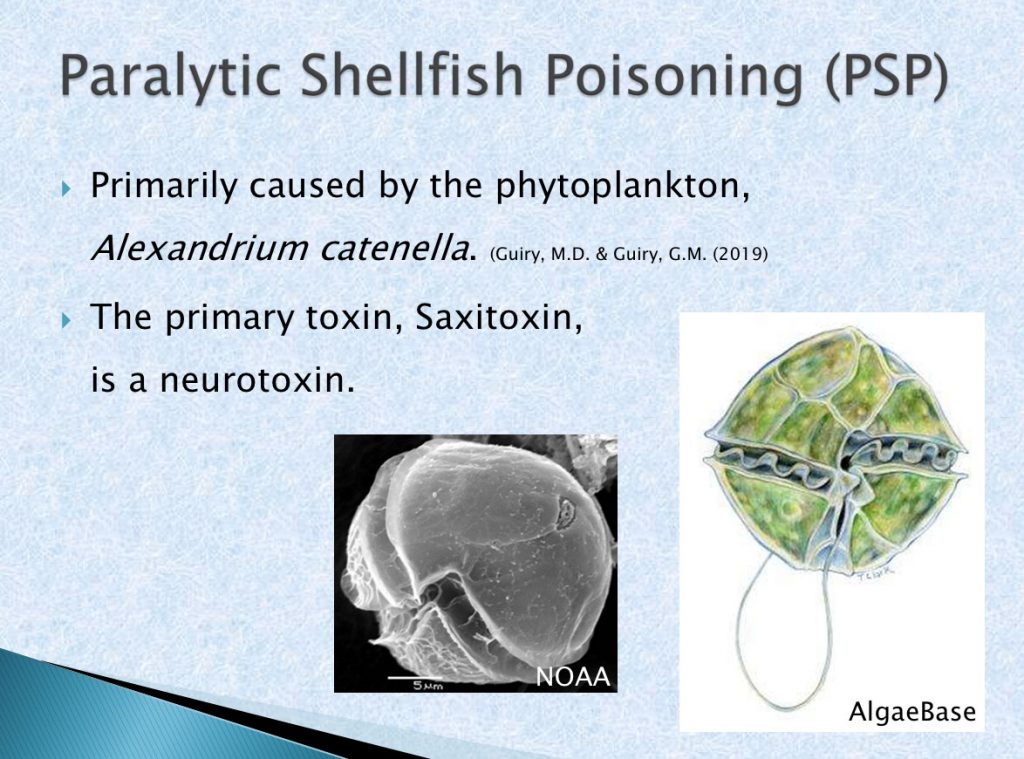
Return to water-quality-meeting

